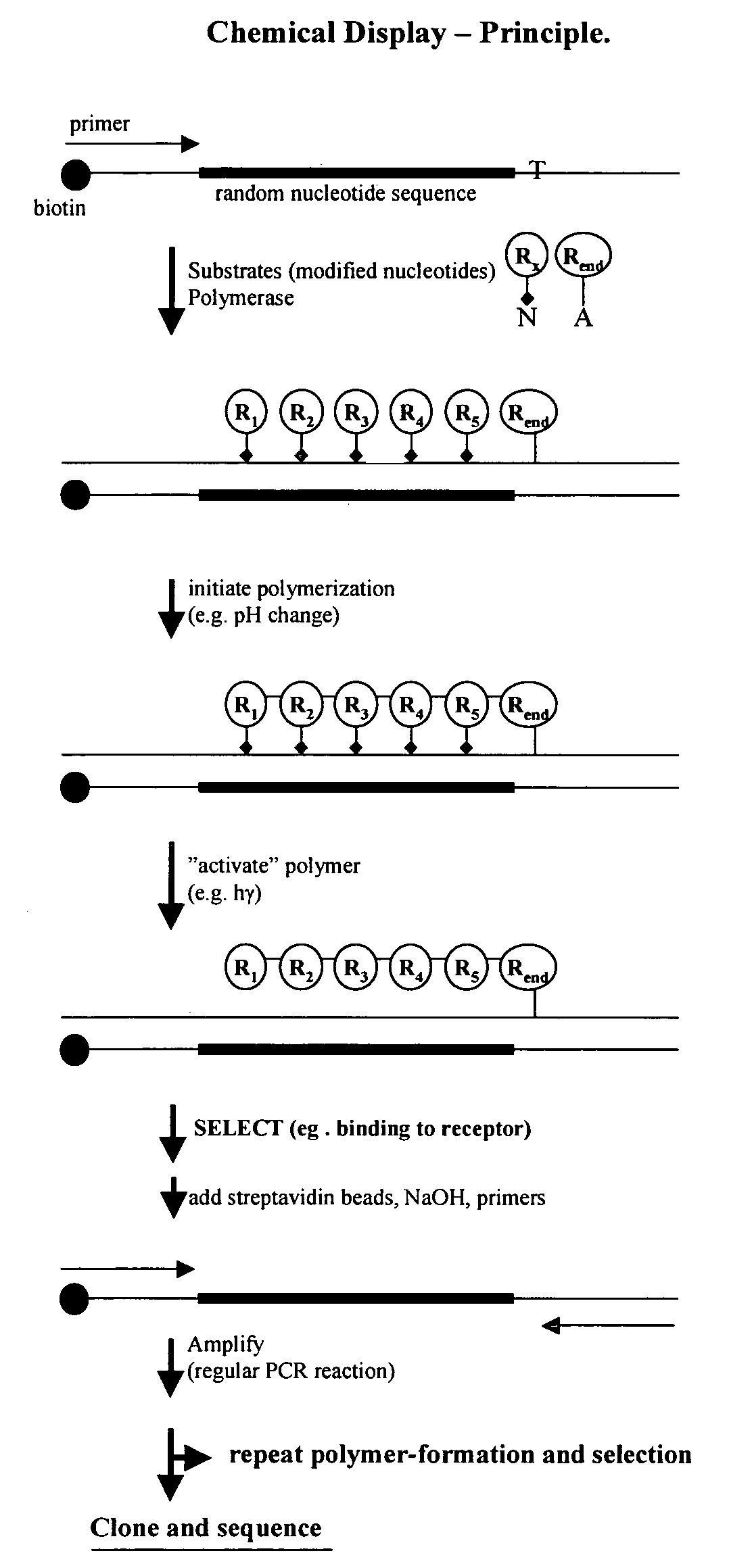Templated molecules and methods for using such molecules
a technology of templated molecules and molecules, applied in the direction of peptides, biological testing, directed macromolecular evolution, etc., can solve the problems of not having the means of amplification of type of combinatorial libraries, requiring the use of very stringent screening methods, and being practically impossible with current technologies
- Summary
- Abstract
- Description
- Claims
- Application Information
AI Technical Summary
Benefits of technology
Problems solved by technology
Method used
Image
Examples
example 1 to 7
Preparation of the Mononucleotide Building Block (I)
[0840]Building block I may be prepared according to the general scheme shown below:
[0841]
example 1
Preparation of 3-tert-Butoxycarbonylamino-propionic Acid (N-Boc-β-alanine) (1a)
[0842]
[0843]To a solution of β-alanine (2.25 g, 25 mmol) in aq. NaHCO3 (25 mL) were added di-tert-butyl dicarbonate (4.36 g, 20 mmol) and acetonitrile (25 mL). The reaction mixture was stirred at room temperature for 18 h.
[0844]EtOAc (100 mL) was added and pH was adjusted to 4-5 by addition of NaH2PO4. The product was extracted into EtOAc (3×50 mL), dried (Na2SO4), and evaporated to dryness under vacuum to afford 3.71 g (98%)
[0845]1H NMR (CDCl3) δ 11 (1H, br s, COOH), 5.07 (1H, br s, NH), 3.40 (2H, m), 2.58 (2H, m), 1.44 (9H, s, tBu).
example 2
Preparation of N-Boc-β-alanine Propargyl Ester (1b)
[0846]
[0847]N-Boc-β-alanine (1.91 g, 10.1 mmol) and propargyl alcohol (0.675 g, 12 mmol) were dissolved in EtOAc (25 mL). Dicyclohexyl-carbodiimide (DCC, 2.06 g, 10 mmol) was added to the solution and after 16 h of stirring at room temperature, the reaction mixture was filtered and evaporated to dryness under vacuum. Crude product yield
PUM
| Property | Measurement | Unit |
|---|---|---|
| temperature | aaaaa | aaaaa |
| temperature | aaaaa | aaaaa |
| temperature | aaaaa | aaaaa |
Abstract
Description
Claims
Application Information
 Login to View More
Login to View More - R&D
- Intellectual Property
- Life Sciences
- Materials
- Tech Scout
- Unparalleled Data Quality
- Higher Quality Content
- 60% Fewer Hallucinations
Browse by: Latest US Patents, China's latest patents, Technical Efficacy Thesaurus, Application Domain, Technology Topic, Popular Technical Reports.
© 2025 PatSnap. All rights reserved.Legal|Privacy policy|Modern Slavery Act Transparency Statement|Sitemap|About US| Contact US: help@patsnap.com



